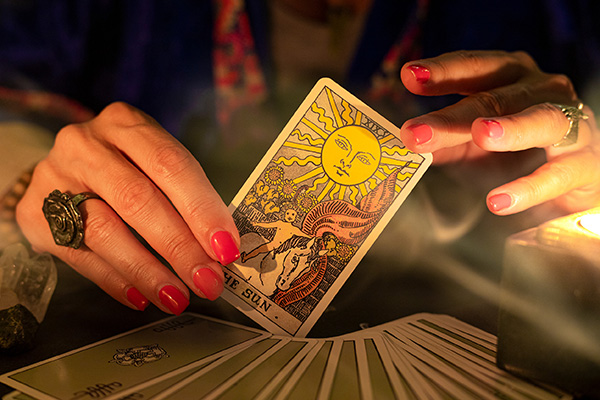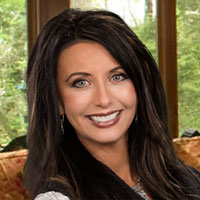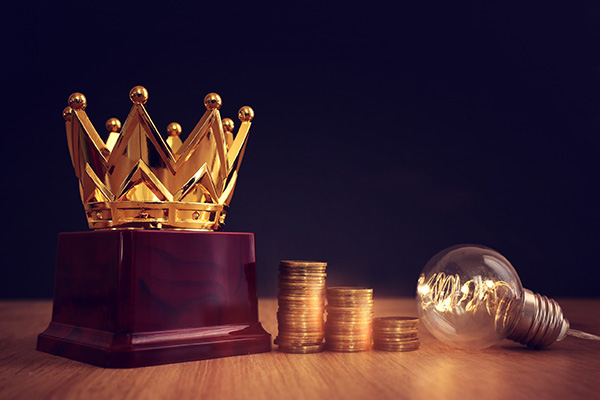Comprehending the Complex Levels of the Tarot’s Mysterious Force
 It’s well known that Tarot is my preferred tool for divination. It feels like a reliable companion, consistently offering guidance and insight in both my professional endeavors and personal spiritual journey.
It’s well known that Tarot is my preferred tool for divination. It feels like a reliable companion, consistently offering guidance and insight in both my professional endeavors and personal spiritual journey.
Have you ever experienced a strong intuition about something, yet struggled to articulate it? Or how sometimes a name eludes your memory, lingering just out of reach?
This is similar to how the Tarot aids me during my readings. It acts as a bridge connecting mundane experiences with the spiritual, helping to interpret psychic messages in a more tangible manner.
The cards serve as a metaphysical magnifier, honing my psychic perceptions and intuitions into clear communications, advice, and forecasts. Occasionally, a single symbolic aspect of a card stands out, demanding focus and revealing the essence of the reading.
One single Tarot card can unveil a wealth of interpretations and insights, each layer influenced by the unique reading. Tarot is highly symbolic and adaptable, allowing for endless interpretations of each card.
Initially, the context of the reading is crucial. Regardless of whether the inquiry pertains to love, career, health, finances, or personal satisfaction, the implication of a card can shift drastically. For instance, the Two of Cups could indicate a romantic relationship in a love reading, whereas it might signify a collaborative business venture in a career context.
Additionally, the client’s mindset and personal situation shape the card’s interpretation. Their histories, aspirations, and apprehensions affect how the imagery and symbolism resonate with the psychic. The same Two of Cups could emphasize trust issues for one individual, but represent a fresh connection for another.
We hold a universe in our hands when we pick up a deck of tarot cards ~ Lon Milo DuQuette
Moreover, the psychic’s abilities, experience, and interpretive approach contribute another dimension. A seasoned psychic can discern subtle symbolism or concealed messages that a less experienced reader might overlook. Their capability to merge the imagery of the cards with the client’s energy narrative can unveil deeper, more intricate insights.
Finally, the multifaceted intricacies of Tarot card symbols and design elements introduce further depth to readings. Each card in a thoughtfully designed deck embodies a mosaic of esoteric symbols and archetypal imagery, intricately devised to elicit specific insights and meanings.
Rich Meanings In A Single Card
The Sun card (number 19) from the traditional Rider-Waite deck illustrates a radiant sun, sunflowers, and a child riding a white horse, crafted by illustrator Pamela Colman Smith to embody the esoteric essence of this card.
The sun represents enlightenment, energy, and optimism. The sunflowers, oriented towards the sun’s arc across the sky, signify alignment with one’s authentic self, enlightenment, and the life-giving warmth of the sun, enhancing the card’s overall theme of joy and completion. The child, in its untainted happiness, symbolizes purity, fresh starts, and the limitless potential of existence. The horse embodies freedom, energy, and progress, with the white horse specifically symbolizing purity and the unrestrained spirit, advancing joyously and confidently.
Together, these elements construct a rich tapestry of joy, enlightenment, and the vitality of life itself. It is intended to evoke feelings of hope, elevation, and the boundless spirit of youth, aligning with the card’s overarching message of happiness, success, and vigor.
Yet sometimes, a solitary Tarot card tells a different, perhaps very literal, narrative.
I once conducted a reading for a mother whose son was facing difficulties at school. He was struggling with his grades and behavioral issues, and she felt overwhelmed. Curiously, the Sun card persistently appeared in her reading. Typically, this would signify favorable grades, happiness with his upcoming report card, and resolving discipline concerns.
However, in this situation, the repeated emergence of this card suggested there was more beneath the surface. It simply didn’t resonate right; it didn’t align with my usual interpretation. So I closed my eyes, inhaled deeply to calm my mind, and sought clarity from my guides.
“Let the card convey its message,” said spirit.
As I opened my eyes to examine the card again, my gaze immediately concentrated on the horse. Then the thought struck me clearly as daylight!
“Have you considered enrolling your son in riding lessons?” I said impulsively.
But could it really be that straightforward? Her expression broadened. A neighbor had recently acquired a horse and extended an invitation to ride, but she had overlooked the option of including her son, let alone contemplating lessons for him.
A month later, she reached out to me, excited to share the remarkable changes: her son had flourished since starting riding lessons. His mood had brightened, his grades improved, and his behavioral concerns had diminished significantly. Occasionally, Tarot can bridge gaps in unexpected and remarkably simple manners.
Tarot is always whispering to you. Tarot weaves truth, stories, secrets, and tales. All you need to do is slow down and listen ~ Sasha Graham
Multi-Dimensional Insights In A Basic Spread
Tarot spreads — the arrangement of cards in a reading — assist in structuring insights for the reader, layering information like chapters in a narrative. However, contrary to common belief, elaborate multi-card spreads are not essential for a reading. Even a basic three-card spread can yield significant revelations.
In the conventional three-card spread, the first card signifies the recent past, the second card the present, and the third card the imminent future. This spread is frequently used due to its clarity and depth, making it suitable for both newcomers and seasoned practitioners.
When I employ this spread, I like to add a fourth card atop the trio for further insight — an aggregate card that unveils hidden patterns or suggests potential actions. This extra layer often provides the missing link that unifies the reading.
In one notable session, a client inquired about a possible promotion. The Emperor surfaced in her three-card spread, flanked by the Star and the Ace of Cups. This combination hinted at a promising career advancement. The Emperor’s presence indicated acknowledgment from her superiors, while the Star suggested divine guidance and inspiration. The Ace of Cups introduced an element of joy and enthusiasm for the tasks she would undertake in her forthcoming role.
Yet, there was more to unravel. Even before commencing the reading, I sensed a nudge to discuss love. When I inquired if she was open to exploring romantic prospects, she acknowledged having recently met someone. Upon re-examining the same cards, I discerned an additional layer of meaning: The Emperor — typically a figure of strength and stability — now indicated a soulmate bond. The Star represented hope and alignment with destiny, and the Ace of Cups overflowed with love and emotional satisfaction.
The connections continued. A third thread emerged when I clairaudiently received the name “Harry.” My client confirmed that her late father, Harold, had passed away alongside his sister, Harriet. Their presence aligned perfectly with The Star’s connection to spiritual guidance and ancestral support. The Emperor, in this setting, symbolized her father’s influence, steering her career and personal life from the other side.
A singular Tarot spread can offer insights into numerous facets of existence, from career and romance to spiritual messages from the beyond. The same cards may address different themes concurrently, weaving a tapestry of interconnected insights. In my client’s scenario, her father’s influence extended into her professional achievements and romantic future. The Ace of Cups even suggested future fertility, a notion she found both thrilling and significant.
I remain endlessly intrigued by the depth of wisdom and the interpretative nuances that the Tarot provides, even within a single card. It’s an esoteric instrument that grows alongside you, perpetually unveiling new layers of understanding and insight. Each deck possesses a unique personality and energy, contributing its own distinct voice.
Over time, I have compiled quite an extensive collection of tarot and oracle cards — exceeding 170 decks and still growing! While some may label it an obsession or addiction, I prefer to refer to myself as a dedicated collector. After all, there are more harmful pursuits one could indulge in!
Tarot transcends just being a set of cards; it represents a connection between the visible and the unseen, a language of symbols that speaks directly to the soul. Whether you’re unfamiliar with Tarot or a practiced reader, there is always more to discover. Every shuffle, every layout, and every reading presents a new dialogue with the universe — an opportunity to reveal concealed truths and immerse oneself deeper into the enchantment of life.
|
Known as The Psychic’s Psychic, since 1998, Isadora has read for thousands all over the world, her impressive list including clients from the Obama administration, Fortune 500 CEO’s and notable names in Hollywood. Her detailed (Gemini) accuracy is nothing short of astounding, with her ability to see people at the Soul Level and clearly answer questions on a wide range of subjects, from relationship matters, business decisions, to past lives, etc.—anything that requires clear answers and pin-point insight. She has the ability to identify hidden patterns that run beneath your current situation, providing you with information to positively change your future. If you’d like a reading with this compassionate, straight forward, laser-accurate and dedicated Psychic, you can find Isadora at PsychicAccess.com. |
Comprehending the Complex Layers of the Tarot’s Mysterious Power
The Tarot has long enchanted the human psyche with its mysterious power. Since its origins in the 15th century, this set of cards has served as a means for divination, introspection, and spiritual development. The Tarot’s complex layers of symbolism and meaning make it a compelling topic for those endeavoring to decode its secrets.
At its essence, the Tarot comprises 78 cards divided into two primary categories: the Major Arcana and the Minor Arcana. The Major Arcana consists of 22 cards, each embodying a significant archetype or life lesson. Cards like The Fool, The Magician, and The World portray universal themes and experiences that resonate profoundly with the human mind.
Conversely, the Minor Arcana encompasses 56 cards divided into four suits: Wands, Cups, Swords, and Pentacles. Each suit signifies a different facet of life, such as creativity, emotions, intellect, and material resources. These cards provide more detailed insights into everyday scenarios and challenges.
What distinguishes the Tarot from a standard deck of playing cards is its intricate symbolism. Each card is embellished with rich imagery and symbols that convey deep meaning. For instance, The High Priestess card often illustrates a woman seated between two pillars, symbolizing the duality of the conscious and unconscious mind. The Moon card presents a lunar scenery accompanied by a dog and a wolf, representing the interaction between instinct and intuition.
To tap into the Tarot’s energy, one must learn to interpret these symbols and comprehend their significance in the context of a reading. This process demands a combination of knowledge, intuition, and personal experience. Numerous Tarot aficionados dedicate years to studying the cards, exploring diverse interpretations, and cultivating their distinctive understanding of the deck.
The Tarot’s mysterious power lies in its capacity to access the collective unconscious, offering guidance and insight into the human experience. It can act as a reflection, mirroring our innermost fears, desires, and hopes. Through a Tarot reading, one can achieve clarity, find direction, and uncover hidden realities.
However, it’s essential to recognize that the Tarot is not a tool for fortune-telling. It does not guarantee the future with unerring accuracy. Instead, it presents possibilities and potential outcomes based on the existing circumstances and energies involved. The Tarot empowers individuals to make informed choices and embrace accountability for their lives.
Aside from its divinatory applications, the Tarot can also function as a potent means for self-exploration and personal evolution. By examining the archetypes and lessons depicted in the cards, one can gain deeper insights into oneself and the environment. The Tarot can assist individuals in identifying patterns, overcoming hurdles, and tapping into their inner wisdom.
Ultimately, the strength of the Tarot resides in its capacity to connect us to something larger than ourselves. Whether through divination, introspection, or spiritual inquiry, the Tarot provides a conduit to greater understanding and insight. Its intricate layers of symbolism and significance continue to capture and inspire those who strive to decode its enigmatic power. Continue reading













